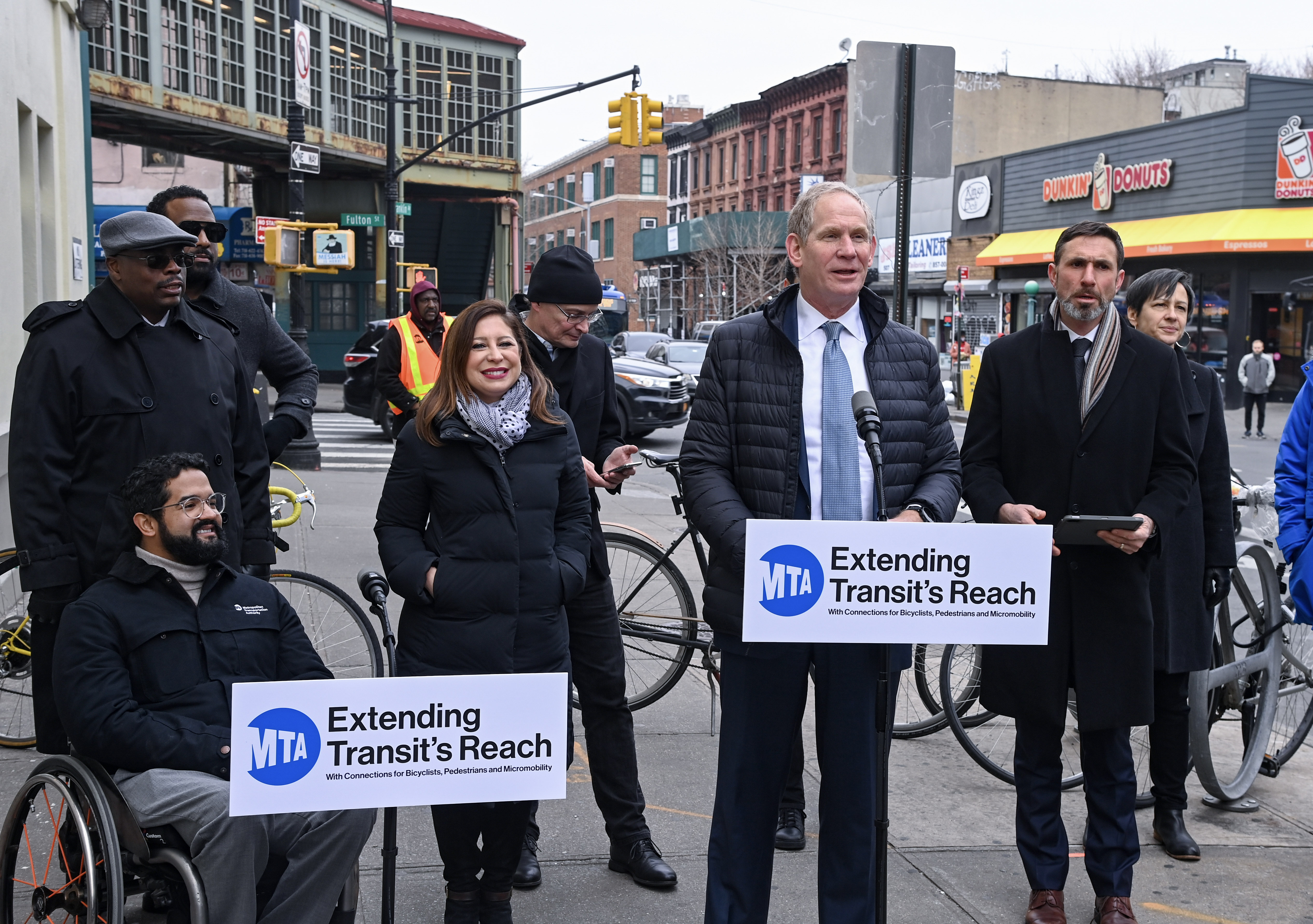Agency Outlines Safety Guidelines for Personal Electric Vehicles on Mass Transit
Charging and/or Riding Electric Vehicles Within MTA Facilities or On Board MTA Vehicles is Prohibited
The Metropolitan Transportation Authority (MTA) today adopted a policy that allows the transport of personal electric vehicles (PEV) on MTA property and on board transit, with the exception of MTA express buses, and outlined the rules for safe transport. This policy supports New York State’s and New York City’s micromobility programs encouraging the use of personal vehicles such as bikes and scooters, particularly for first and last mile transportation, enhancing the transit experience by supporting multi-modal journeys and providing seamless integration. The policy will increase access to MTA transit by for people who do not live within walking distance from a transit station and fulfills one of the short-term goals established by the Extending Transit’s Reach, the MTA’s landmark Bicycle, Pedestrian, and Micromobility Strategic Action Plan issued in January.
“Safety is the MTA’s priority,” said MTA Chief Safety & Security Officer Patrick Warren. “This policy safely introduces a way for passengers to bring personal electric vehicles on board transit while supporting the rise in micromobility and accessibility to transit.”
“An accessible transit system that is reachable and convenient to use benefits all New Yorkers,” said NYC Transit President Richard Davey. “System accessibility is essential for all MTA riders and this policy allows riders in less well served areas to better connect with the transit system in a safe manner.”
“Over the last few years, we have made notable progress on the commuter railroads to better connect customers to railroad and/or subway stations,” said MTA Long Island Rail Road Interim President and Metro-North Railroad President Catherine Rinaldi. “To highlight, we have installed bike racks at over 60% of LIRR and Metro-North railroad stations and eliminated bike permits. We look forward to expanding our transit reach with this new policy in a way that is effective and safe for all passengers.”
“Today’s announcement of the new overarching policy regarding the use of e-bikes and e-scooters in stations and on board subways, trains and buses is very welcome,” said Executive Director of the Permanent Citizens Advisory Committee to the MTA (PCAC) Lisa Daglian. “The common sense rules and regulations — no riding, no charging, size and weight restrictions, and no damaged or non-UL-listed batteries — are designed to keep riders and MTA workers safe, and are in keeping with legislation happening around the region and hard conversations being undertaken with law- and firefighting professionals. We appreciate the care the MTA has taken in developing this policy and look forward to continuing to work together to make adjustments as needed as it is implemented.”
"Transit expands the reach of e-bikes and scooters, making our city more accessible to more people," said Executive Director of Transportation Alternatives Danny Harris. "The MTA's new policy allowing electric micromobility is an important step toward a seamless transportation system for our region, especially with the MTA's bike bus rack expansion. We look forward to more announcements from the MTA's Strategic Action Plan."
The rules apply to all customers, MTA employees, contractors, consultants, and visitors. The specific procedures and policies in place concerning transport of bicycles for each respective agency apply to the transport of PEVs. For bike regulations, see here.
- Charging of PEVs in or on any MTA train, subway, bus, platform, station, facility, or terminal is prohibited
- Walk with it, don’t ride it
- If the PEV can be folded, it must be folded, or compacted and carried, except for on MTA express buses. Any form of PEVs, including foldable permissible PEVs, are prohibited inside MTA express buses.
- PEVs must remain powered off during transport
- Doors, seats, aisles and emergency equipment must be kept clear
- PEVs and their batteries must never be left unattended, discarded, stored, locked to any MTA asset within the system, or abandoned for any reason
- Cannot exceed 100 pounds in weight
- Must have a wheel diameter not exceeding 27 inches nor be more than 80 inches long or 48 inches high
- Hoverboards are not permitted in the system
- Must use batteries that are Underwriter Laboratory (UL) certified and listed
- Must not emit environmental contaminants
- Must not have damaged batteries
- Property of a shared or rented PEV provider (e.g., Citi Bike, Lime, Bird, Lynx, etc.) into the system is not allowed
These rules do not apply to mobility devices as defined under the Americans with Disabilities Act (ADA). MTA employees and customers should always give priority to people with disabilities. A PEV is defined as a device, not under Americans with Disabilities Act (ADA) governance, that transports and/or propels either an individual or property by means of electric or battery power, including fully electric and hybrid manual/electric devices.
Read more about uses and restrictions as outlined in the PEV Safety Guidelines and in the All-Agency Policy Directive on Personal Electric Vehicles here.
